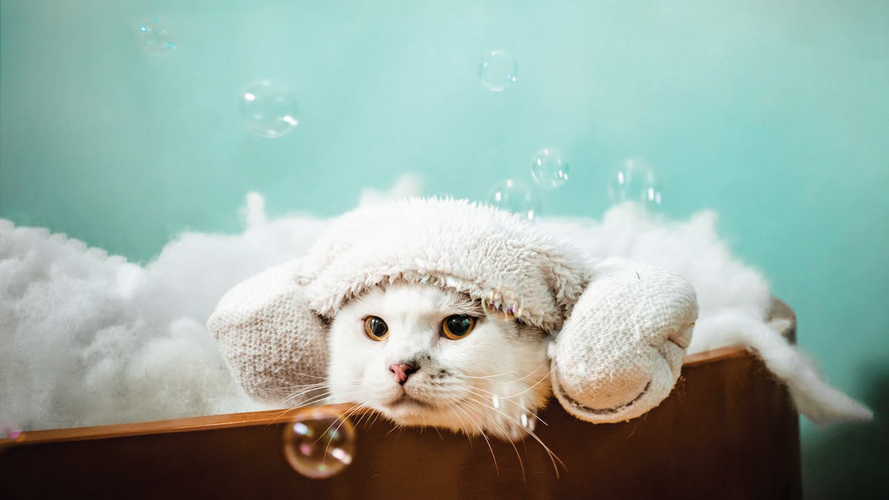How to Bathe a Cat: A Complete Guide
Jan 16, 2025
Cats are natural self-groomers, equipped with tongues designed like tiny combs to clean and maintain their coats. However, there are occasional circumstances when giving your cat a proper bath becomes essential. This guide will help you identify when your cat needs a bath and outline the best techniques to make the process smooth for both you and your feline friend.
Do Cats Need Baths?
Typically, cats do not require regular bathing as dogs do. Their self-grooming habits are usually sufficient for everyday cleanliness. However, certain situations call for intervention:
- Unusual Messes: Cats exposed to mud, sticky substances, or skunk spray may need a bath.
- Long-Haired Breeds: These cats may require occasional baths to remove debris or tangles from their fur.
- Special Needs Cats: Overweight, elderly, or disabled cats might struggle to clean hard-to-reach areas and benefit from a helping hand.
As a rule of thumb, if the mess exceeds your cat's ability to self-clean, a bath is warranted.
Grooming Basics
Shedding is a year-round occurrence for most cats, though it becomes more noticeable in the warmer months, particularly for outdoor cats. Regular grooming is key to managing shedding and maintaining your cat’s coat.
- Brushing: Frequent brushing reduces loose hair in your home, prevents matting, and minimizes hairballs.
- Seasonal Grooming: During spring and summer, increase brushing frequency to manage seasonal shedding.
How to Wash a Cat: Preparation and Tips
Preparing for the Bath
If you decide to bathe your cat at home, gather the necessary supplies beforehand:
- Pet-specific shampoo and conditioner (or a two-in-one product).
- A sturdy brush or comb.
- A non-slip mat for the sink or tub.
- A clean towel.
- Plenty of treats for positive reinforcement. Explore our treats range.
Important: Never use human shampoo on your cat, as it can irritate their skin and may contain harmful ingredients.
Pre-Bath Steps
Cats aren’t known for their love of water, so it’s important to take steps to minimize stress:
- Trim Nails: Clip your cat’s nails to reduce the risk of scratches.
- Brush Thoroughly: Detangle your cat’s fur and remove any mats. Do not bathe a matted cat—contact a professional groomer or veterinarian instead.
- Set Up the Bathing Area: Lay out your supplies, adjust the water to a lukewarm temperature (similar to what you’d use for a baby), and ensure the space is comfortable.
Bathing Your Cat
- Wet the Coat: Use a showerhead or nozzle to gently wet your cat, starting at the rear and moving forward. Avoid the face.
- Lather: Apply shampoo and lather the fur, following the instructions on the product label. Again, avoid the face.
- Rinse Thoroughly: Ensure all soap is rinsed out to prevent skin irritation.
- Dry Off: Use a clean towel to absorb as much moisture as possible. For the face, use a damp towel or specially designed cat wipes.
- Reward and Praise: Offer treats and soothing words to create a positive experience.
How Often Should You Bathe a Cat?
Healthy cats with regular brushing rarely need baths. Exceptions include unusual messes or special circumstances requiring extra hygiene care.
Not ready to tackle bathing your cat alone? Many grooming salons, can assist with tough jobs. Before booking, ensure your cat is up-to-date on vaccinations and confirm availability for cat grooming services at your local salon.
With proper preparation and patience, you can turn bath time into a manageable, stress-free routine for both you and your feline companion.

